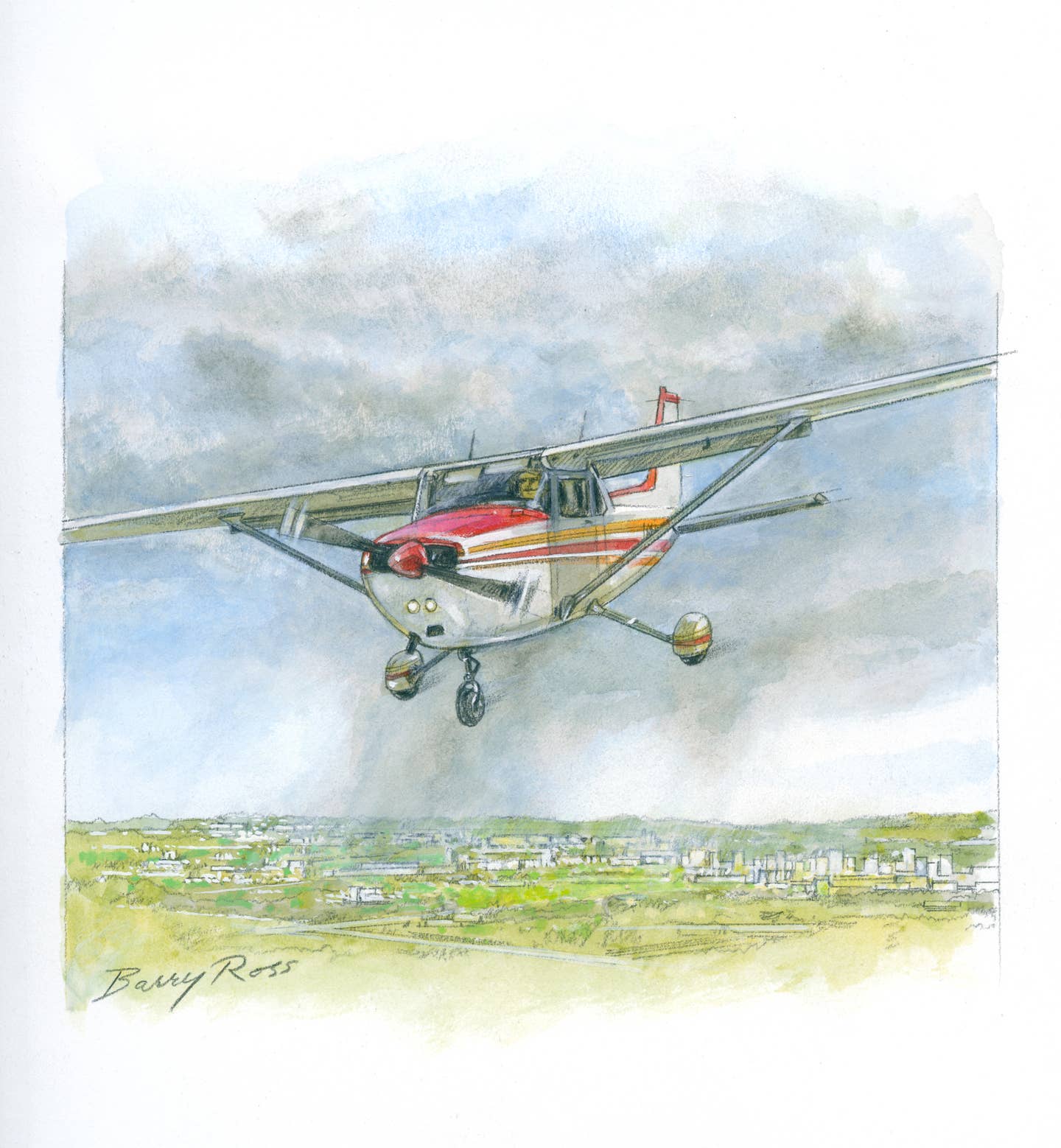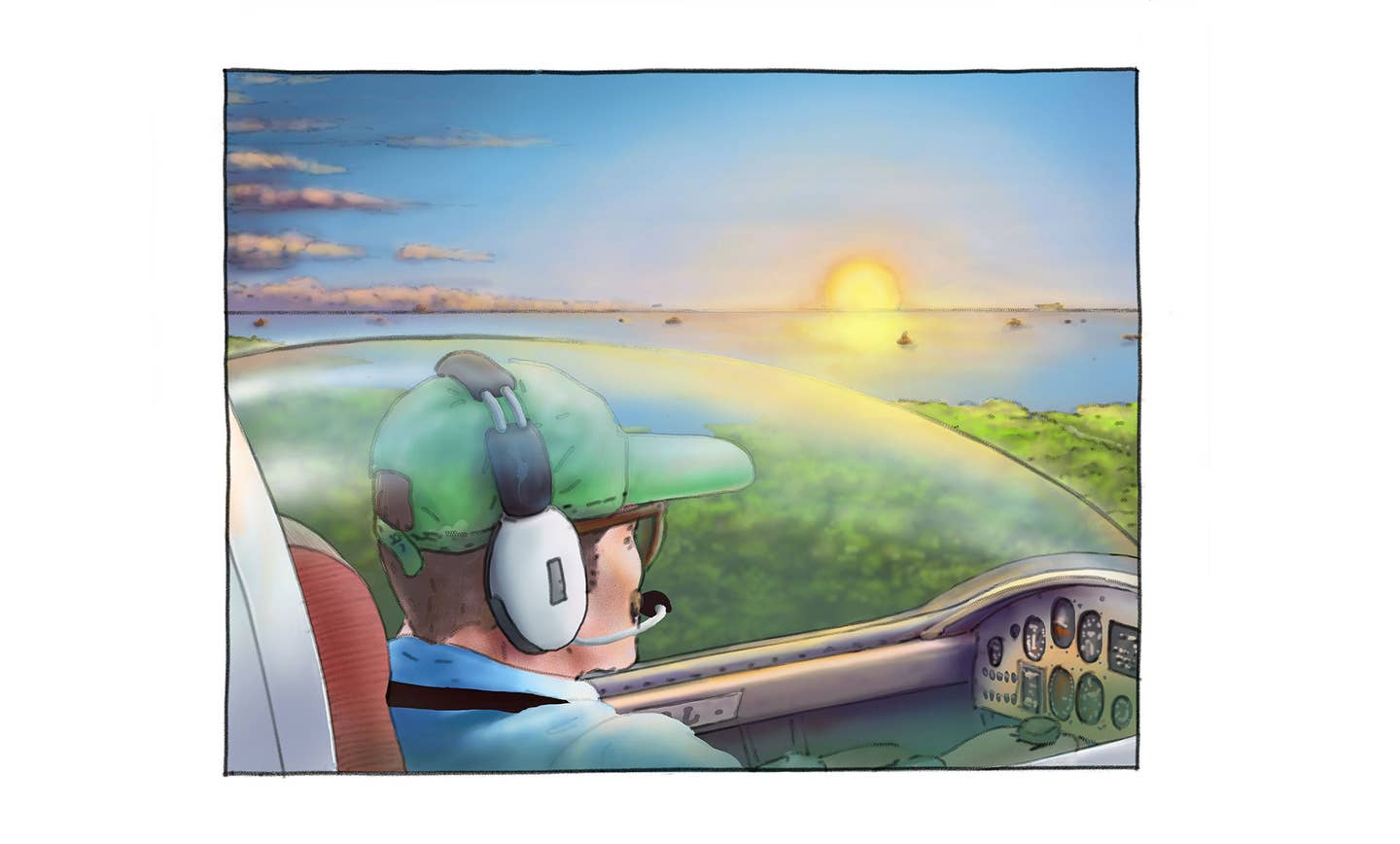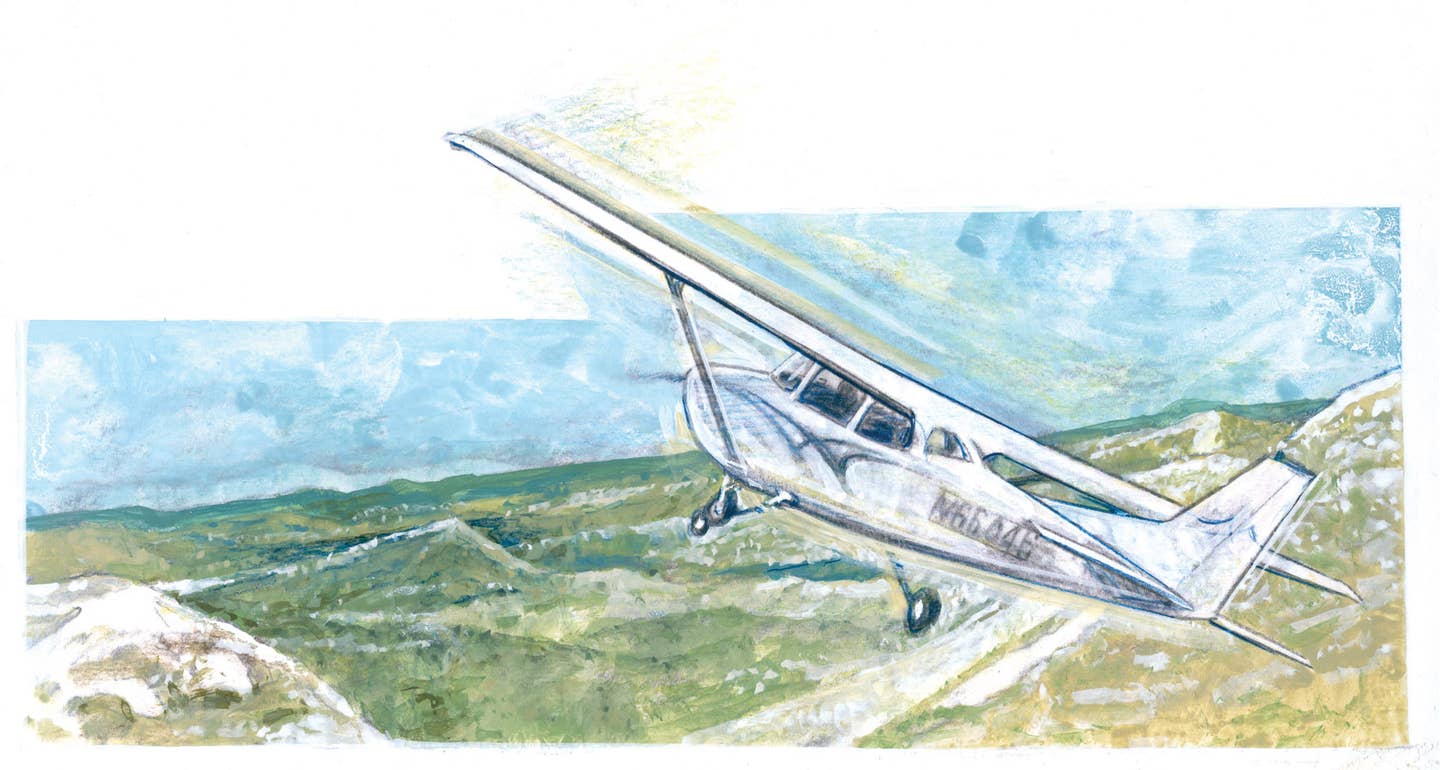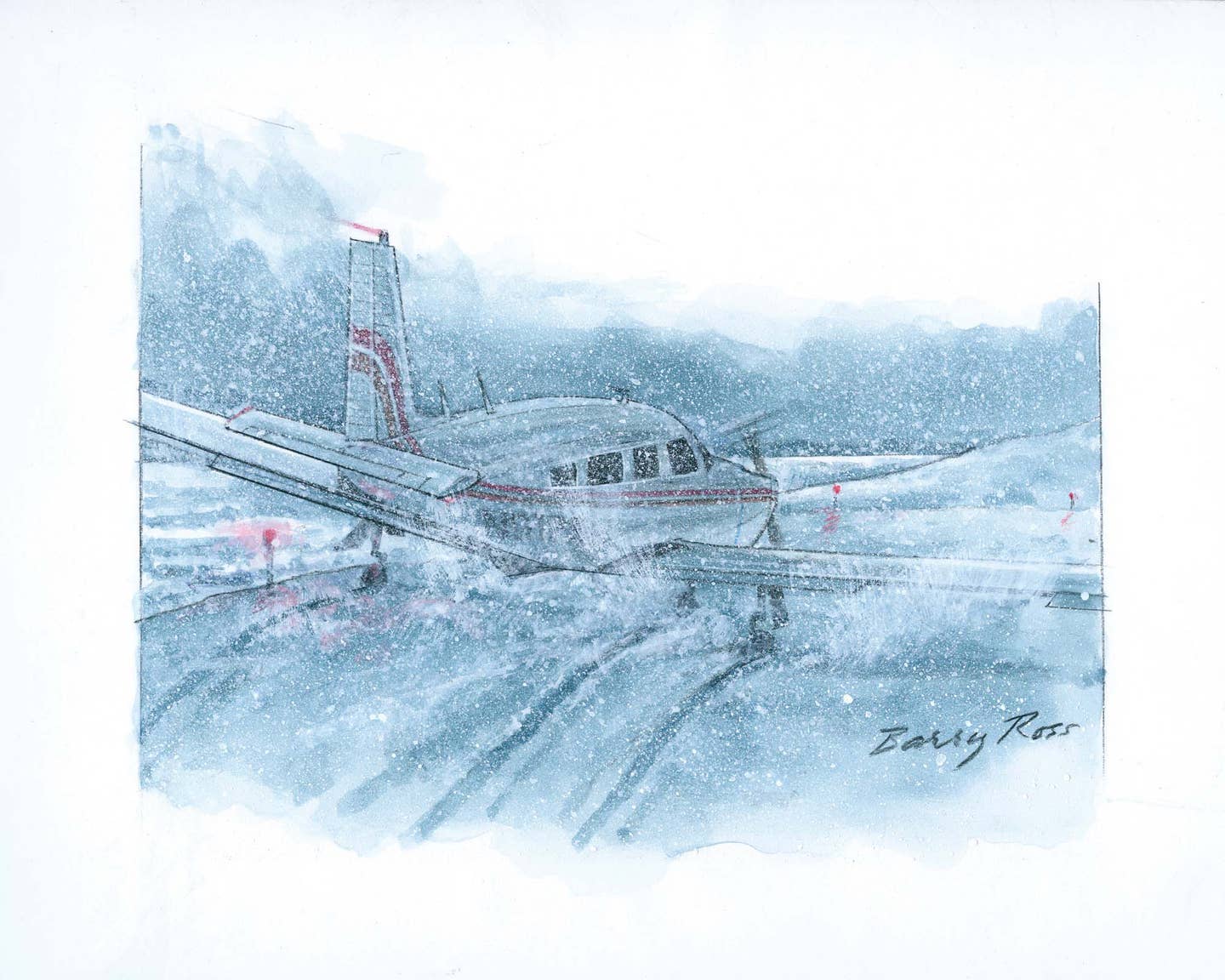Lessons Learned: Do I Really Need a Briefing?
If you’re like me, at some point in your pilot career, you may have asked yourself this: “Do I really need a weather briefing? The TAFs look like things will…

Illustration by Barry Ross
If you’re like me, at some point in your pilot career, you may have asked yourself this: “Do I really need a weather briefing? The TAFs look like things will probably be fine. I’m not going that far. I’ll just get while the gettin’ is good, and I’ll be there before any bad weather moves in.”
Most of us would probably admit that we have done this. I had this inner dialogue recently and found myself in some rough weather, and thought it was worth sharing some of the lessons that I learned through that experience.
I was living at the time in western Kansas, where (put generously) there is not exactly a “thriving” flight training market. As a student trying to work through my ratings toward a CFI certificate, this was a major inconvenience. As a result, I drove 2½ hours almost every weekend to Wichita to take flight lessons. I had been doing this for some time, and the driving was getting old. So, like any self-respecting pilot who would rather be flying, I elected on the weekend in question to rent a Cessna 172 locally and fly to my flight training, with a stop on the Kansas-Missouri border before I turned back around and landed in Wichita, so that I could count it as my long commercial cross-country.
That scenario in itself was not daunting. I’m comfortable flying through controlled airspace (Wichita is Class C with several Class D airports in the vicinity), and I have flown that particular route a handful of times. As was my habit at the time, I glanced at ForeFlight and looked at the METARs and TAFs, saw that there was a convective outlook just east of Wichita but decided that it would probably be fine because radar didn’t show much popping up, and it looked to me (with all my meteorological expertise) that any weather that did develop would stay east. To top this all off, I reasoned with myself that, if it got gnarly, I had a fresh new instrument rating, and I was flying an airplane with an excellent IFR panel (although no autopilot) and ADS-B In weather data.
Hopefully, you are seeing some of the red flags that I did not identify at the time. For starters, I didn’t get a briefing or look into the weather products with any depth. Additionally, I allowed my desire to fly and get to where I wanted to go influence my decision-making, as I rationalized that I had a capable airplane and an instrument rating. I was flying on a spring afternoon with warm weather, a good amount of humidity, and convective activity predicted. Not a good combination.
I drove out to my local airport, preflighted the airplane, saw that there wasn’t any significant weather between me and my destinations, called for a clearance for practice, and departed into VFR conditions. The first portion of the flight was relatively normal, and all I saw was some cloud buildup in the distance. This did not immediately concern me, as any weather was predicted to remain to the east of my path. As I flew over Wichita, the cloud bases started looking closer to my altitude. In addition, clouds were developing and growing in height all around. Wichita Approach started becoming very busy with flights asking for deviations around the building weather. I found myself in the same predicament and used the FIS-B weather in the panel to look at METARs in the area, knowing this was not the time to have my first real experience with actual IMC conditions.
When I could get a word in edgewise, I requested to amend my flight plan and divert to my final destination. After some questioning from ATC, the deviation was approved, and I was given vectors to that airport. As I approached, I encountered heavy rain and had to dodge several cloud banks. Approach offered a visual or an instrument approach, and I elected to take the visual because the airport I was landing at has just two instrument approaches. The only one I was even close to was a VOR-A approach that would require a high descent rate, not to mention a final approach course that was very close to some of the aforementioned clouds. Thankfully, the visual approach and landing ended up being uneventful, and I got the airplane parked and tied down moments before more heavy rain began.
So what about the lessons learned? I have a few takeaways that have changed the way I plan my flights and make go/no-go decisions:
1. Don’t fall for “get-there-itis.” I could have easily driven to my training that afternoon. This was half get-there-itis and half “I haven’t flown in too long.” I put myself in a situation that could have ended up being much worse than it was because I didn’t consider all the factors that could have influenced me to make a safer decision.
2. Always get the briefing. This could be one from any of the following sources: ForeFlight or another EFB, Flight Service’s website, 1800wxbrief.com, or actually picking up the phone and speaking to a briefer.
3. Get better at interpreting weather products. Weather has always been a weak point for me, but I have never taken the time to really study up on those deficits in my knowledge.
All things considered, this situation never escalated to a serious risk, but it was still a thought-provoking experience and one that I will think of every time I plan a flight.
My future students will get the importance of understanding weather hammered into their minds from day one of flight training. As they say, a good pilot is always learning.
Editor's note: This story originally appeared in the JAN/FEB 2024 issue of Plane & Pilot magazine.

Subscribe to Our Newsletter
Get the latest Plane & Pilot Magazine stories delivered directly to your inbox






